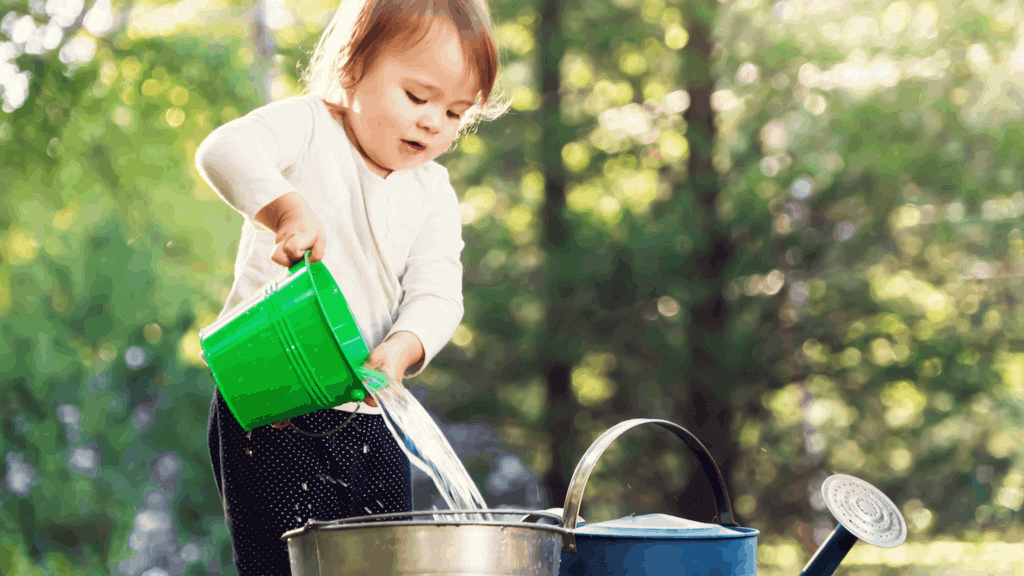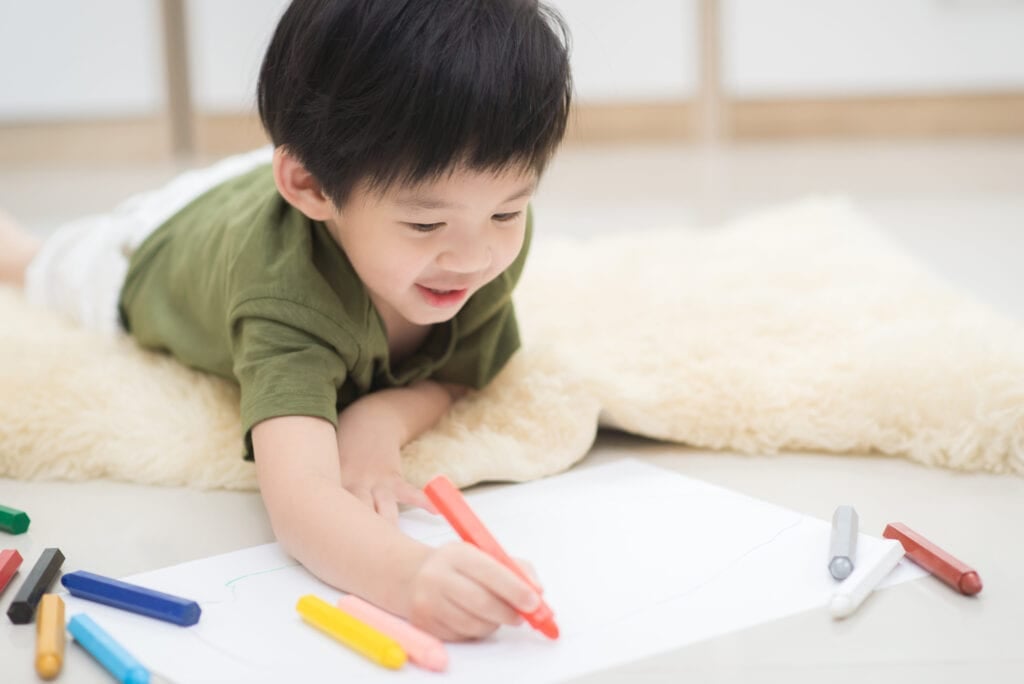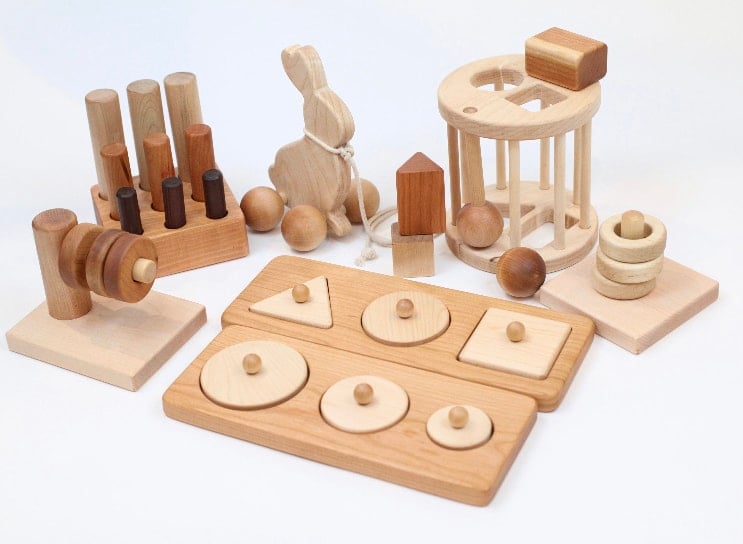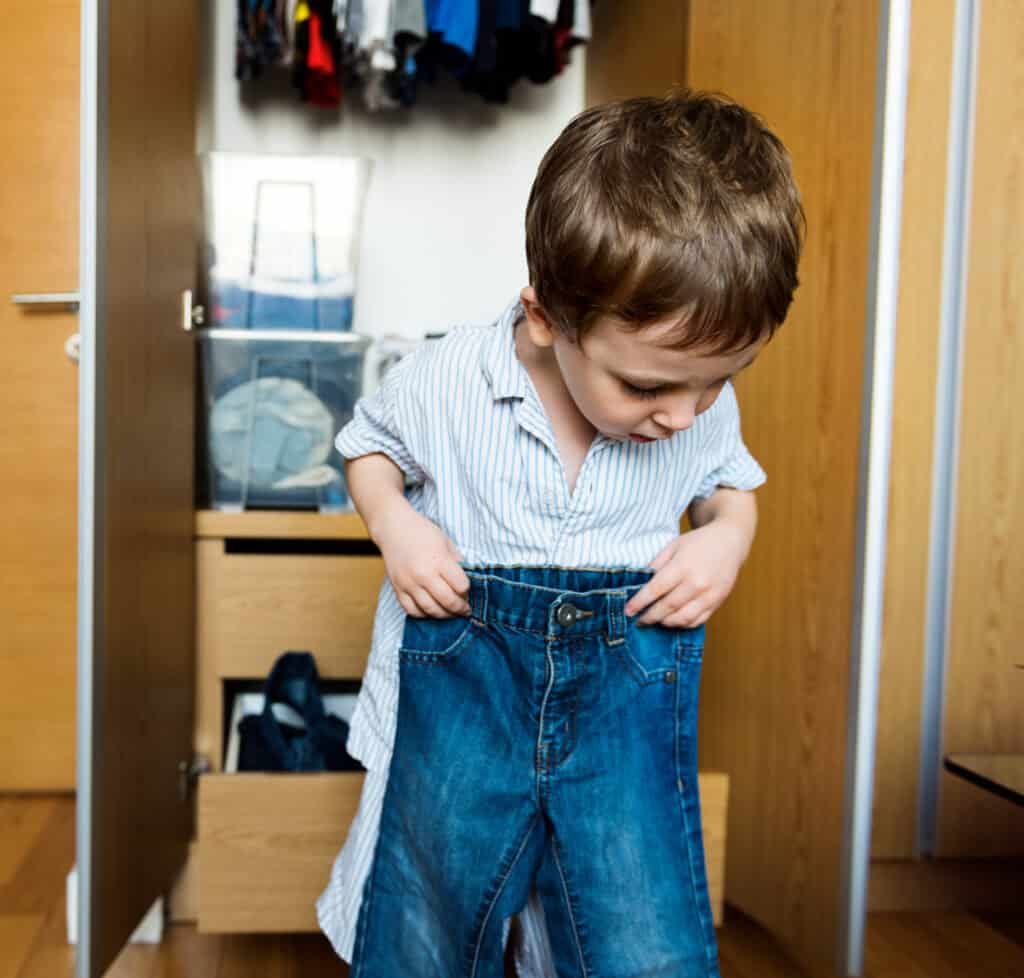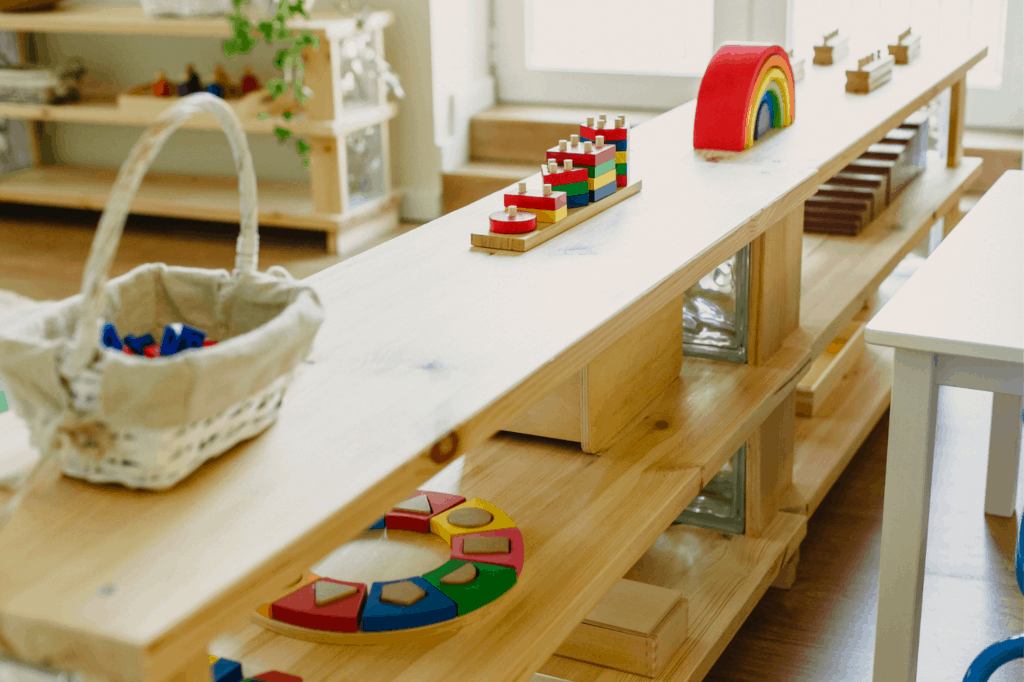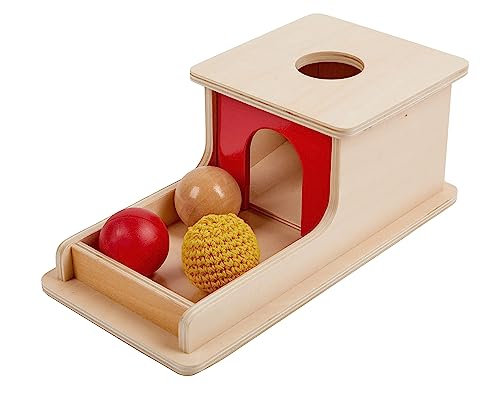
An object permanence box is a tool for children to learn that objects still exist when no longer visible. It was created based on the
Research has shown that students have a natural curiosity for learning when provided the correct tools for their development. Developing object permanence is important for every child, and a box like this can be helpful.
Benefits of an Object Permanence Box
Object permanence is important for children to learn, experience, and ultimately understand.
Have you ever noticed that when a toy is taken away from a baby or toddler and hidden, they don’t go looking for it? Rather, they move onto the next toy available because they have not yet learned that the object still exists when it’s out of sight.
These toys are also great for helping children develop their fine and gross motor skills.
Fine motor skills include picking up small objects with their fingers and placing them into the holes of the box. Gross motor skills include large movements, like picking up the box itself or walking/crawling over to the box.
Their hand-eye coordination is also being developed because of their practice in finding the hole in the box and placing the ball directly inside (Source).
How to Make an Object Permanence Box
Create a Box
Choose any cardboard box that has a lid or can be folded together to make a covering. Make sure that this box is not too large. It should be easily accessed by your child to let them move it around.
They should be able to see the top of the box and it can easily be opened and closed again. Make sure it is big enough that an object can be placed inside.
Find a Small Object
Make sure that the small objects used in this activity are not small enough to fit inside your child’s mouth. They should just be small enough that your child can pick them up and hold the object with one or both hands.
Cut a Hole
It is important to make sure the hole in the top of your box is large enough to put your small object into but small enough so that your child will not be able to see it once it has been placed inside. Try to make the hole fit exactly around the object.
You may have multiple objects of the same size for this particular activity since we are just focusing on knowing the object exists rather than the object itself fitting into holes.
Paint and Color objects
Make the object colorful! Help them stick out from the box so that children can engage and identify them easily. Paint the box a separate color from the small objects.
If you are using multiple small objects, make sure they are different colors to help the child identify them more easily.
Another option is to laser-cut an object permanence box. So if you happen to have a laser-cutter or know someone who does, you can purchase plans on Etsy for laser cutting your own object permanence box and wooden ball.
Where to Buy an Object Permanence Box
Not wanting to take the time to do it yourself? You can purchase an object permanence box from Amazon, Etsy, and small online
Amazon.com has a good selection of well-reviewed object permanence boxes from about $18-$29, including this one from Elite

Etsy also has a good selection of handmade object permanence boxes from about $26-40, including this one from DiLittleCorner for $35.
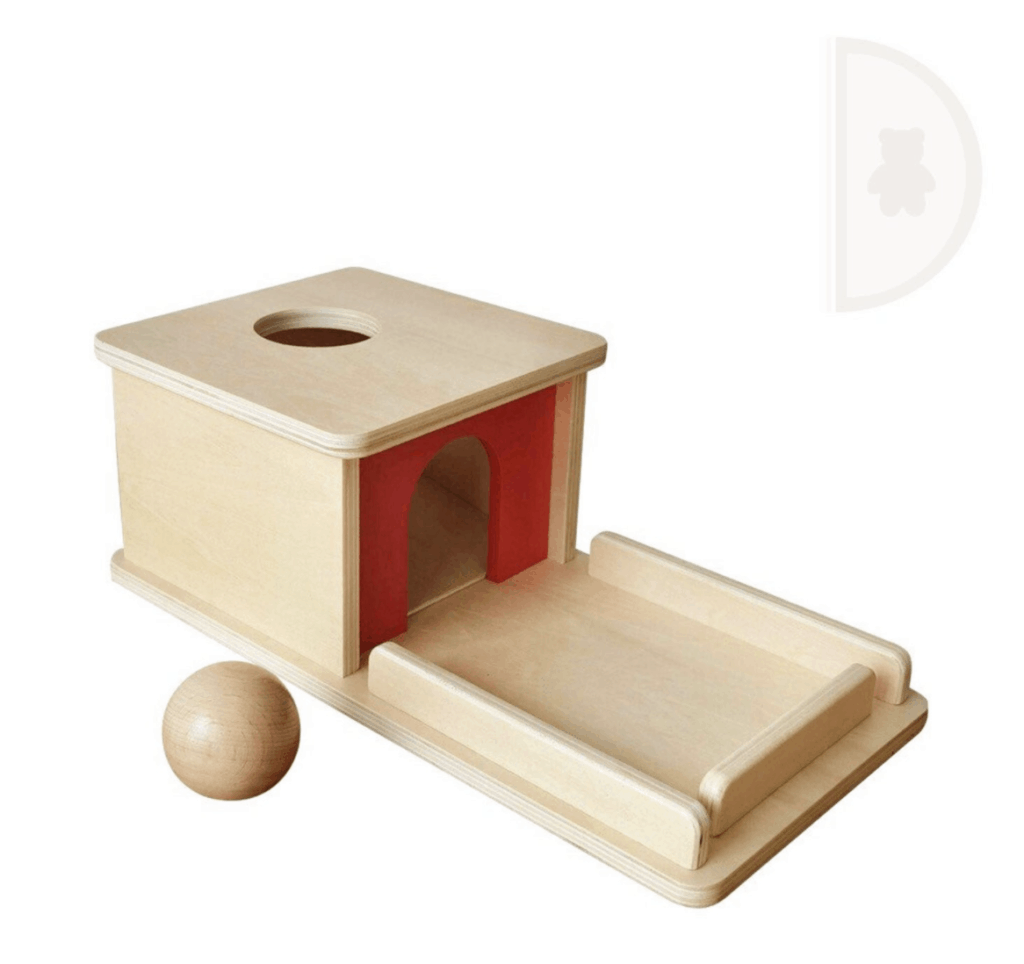
This solid rubberwood object permanence box from
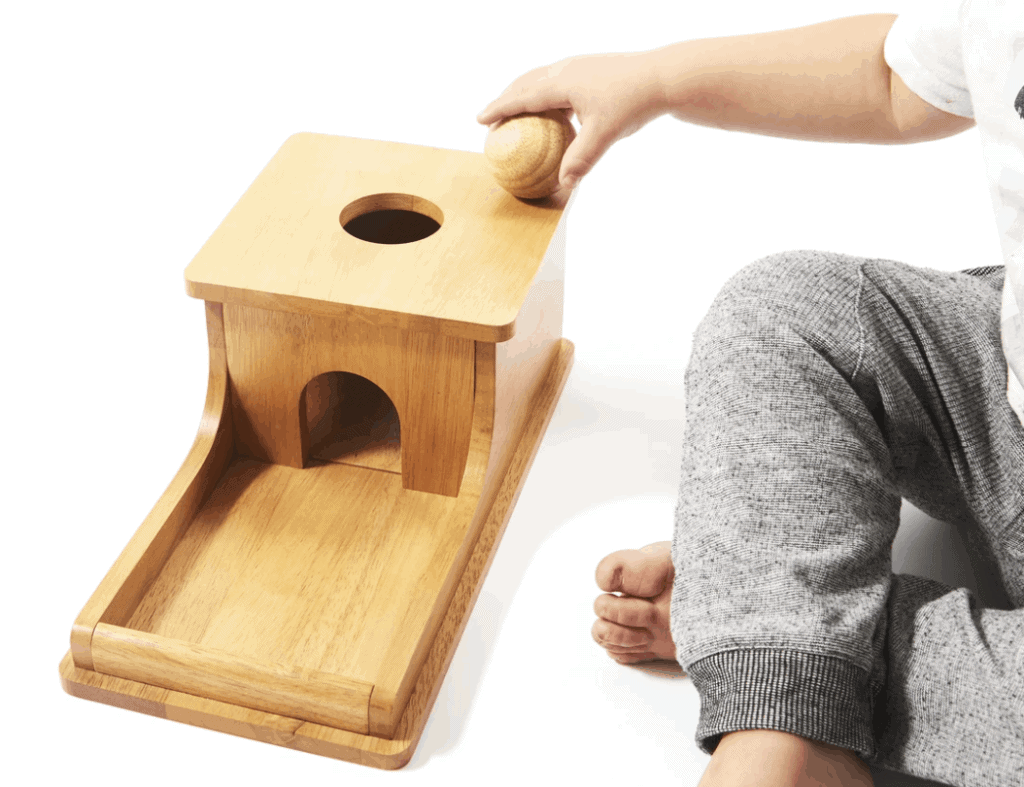
Other Montessori Materials
A few other materials that are used in the
Ball Trackers are a great tool to help students use eye tracking. They watch a small ball fall slowly down uneven boards from top to bottom. This helps the child develop skills needed later for both reading and writing.
An Imbucure box is another toy used to help students understand that different shapes can have the same size. This enhances problem solving skills and develops hand-eye coordination. This is also helpful for future reading and writing.
What is a Montessori Education
Dr. Maria
In her research, she discovered that children have a natural curiosity for learning and discovery. She believed that if students were left alone in a well prepared environment for their age group, through exploration, children would naturally learn.
A
Montessori education is focused on building and developing all areas of the child’s life including cognitive, physical, emotional, and social.
Meaningful experiences are then the cornerstone of her methods. Toys should be for purposeful learning and exploring, not simply occupying attention (Source).
The basis of this method is to offer authentic and meaningful experiences for children and students.
How to Create a Montessori Environment
The main concepts included in creating a Montessori environment include just a few simple steps (Source).
Educated Adult
Make sure that the adult looking after the child is well educated in what is included in a
Dimensional Classroom
Make toys and activities available that range a number of years, including up to 3 years advanced. This allows children to be exposed to leadership opportunities with other children and facilitates sharing and guidance among peers.
Montessori Materials
Provide many toys and activities that can be used without the need for adult interruption. Make sure they are Montessori recommended and allow for many toys of the same kind to be available for all the children.
Agency
Students should be able to choose which toys and activities to participate in freely, without the need to continue use after natural curiosity or learning has ended.
Play Time
It is lastly very important to let the children work and play on their own without any interruptions. This allows for exploration and development of natural curiosity rather than moving from activity to activity worried about running out of time (Source).
Learn More
Check out our other articles for more information on how to create a Montessori learning environment at home and Montessori for your infant. You can also visit the official American Montessori Society website.


